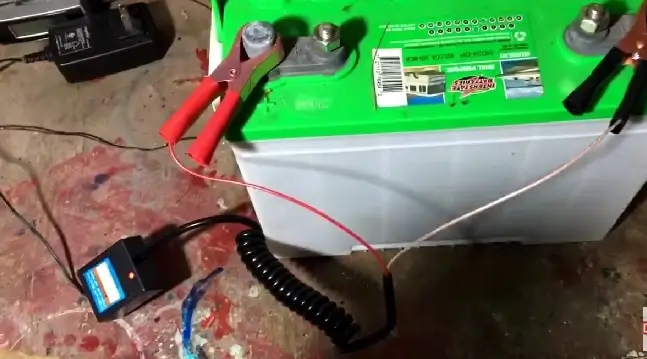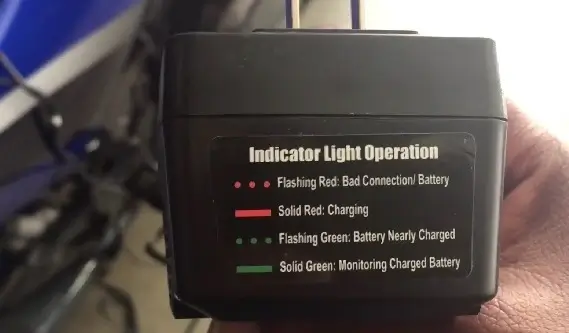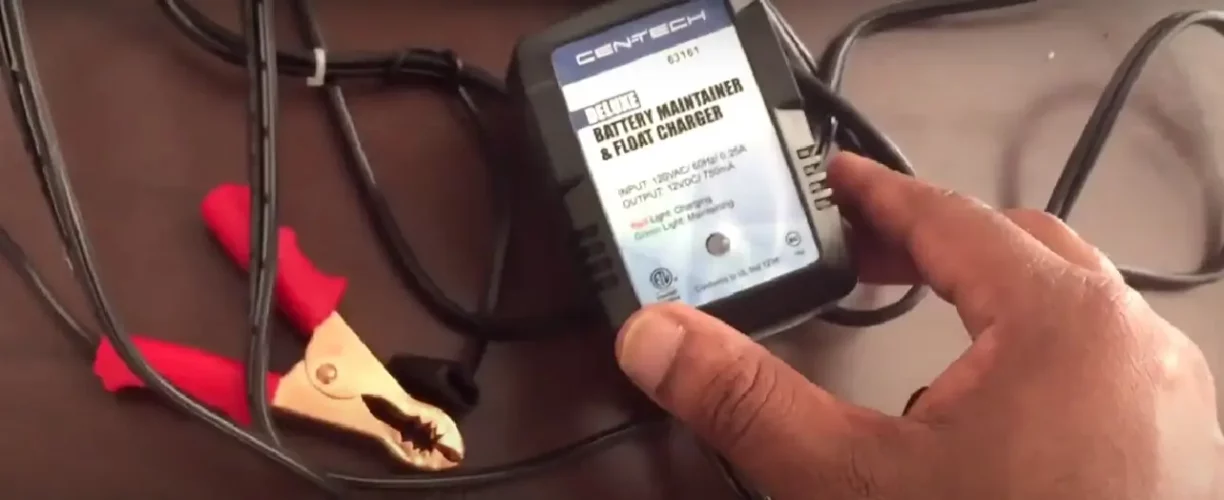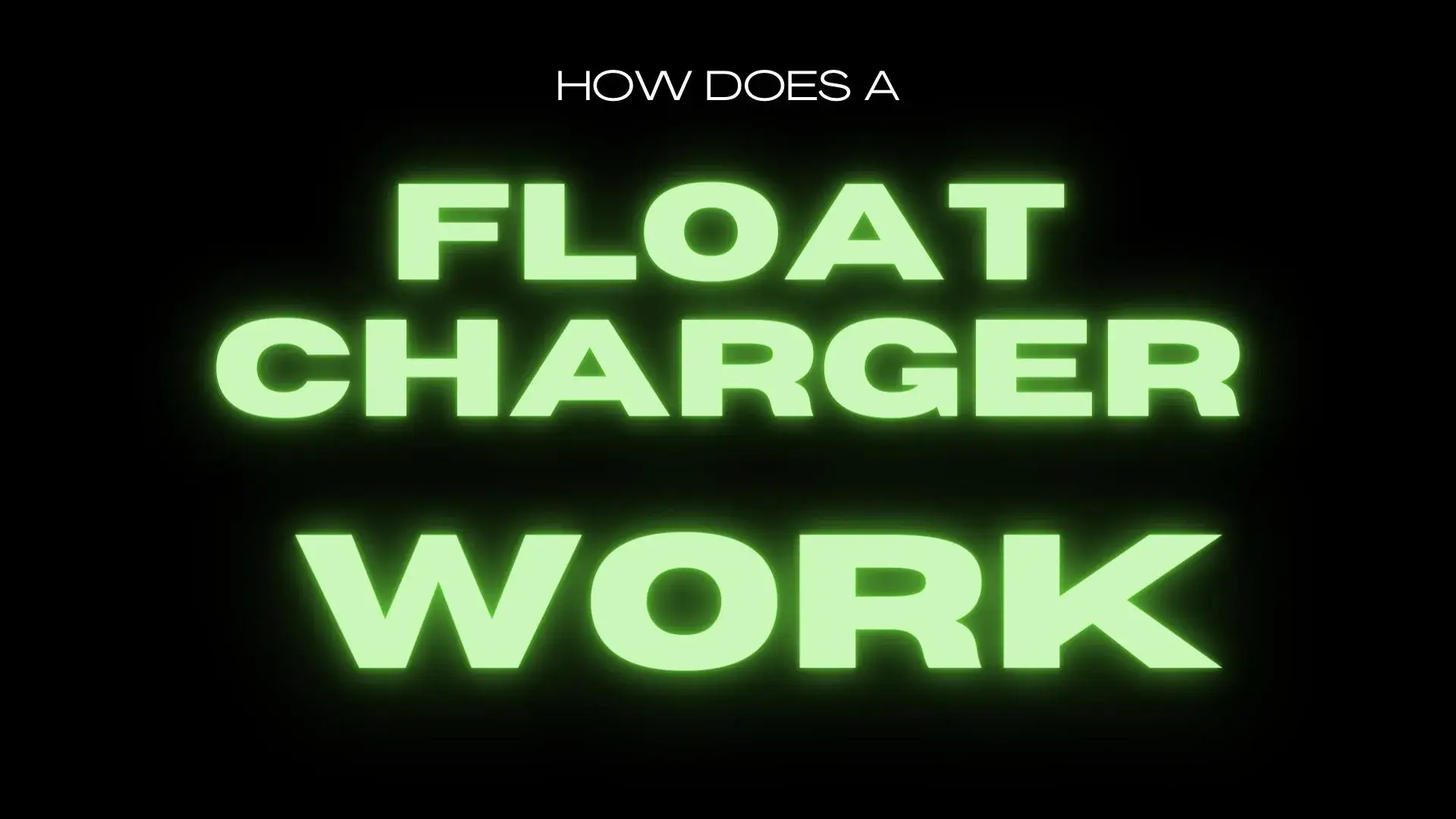How Does a Float Charger Work? Say goodbye to battery anxiety and enjoy the peace of mind of a properly charged battery.
Are you tired of constantly monitoring and charging your batteries? Do you wish there was a way to keep them charged without the hassle? If so, you’re in luck.
The answer is a float charger.
In this article, I’ll explain how a float charger works and how it can save you time and effort in the long run.
But before you rush to buy a float charger, it’s important to understand that it may not be the perfect solution for every situation. While it can work wonders in many cases, there are scenarios where it may not be the best choice.
For instance, if you have a battery that is heavily discharged or damaged, a float charger may not be the best option.
Keep reading, and I’ll get into the reeds of float chargers, why they are useful, and when you should consider using one.
Table of Contents
Key Takeaways
- Float chargers maintain a battery’s charge by detecting and maintaining voltage levels, preventing overcharging and sulfation.
- These chargers are affordable, durable, easy to install, and can extend your battery’s life.
- Float chargers may require periodic monitoring and not work well with specific battery types.
How Does A Float Charger Work?
So, let’s take a look at how a float charger works. When we connect a float charger to a battery, it provides a constant voltage to prevent battery drain. It regulates the output voltage and maintains the battery’s charge level. This helps extend the life of the battery and ensures that it’s always ready to go when I need it.
But my favorite thing about float chargers is that they prevent sulfation.
And that is a common issue in lead-acid batteries.
Sulfation occurs when a battery sits at a low charge for too long. My float charger guards against this by maintaining the proper voltage. Isn’t that awesome?
But how does the float charger control the output current? It’s simple! The charger adjusts the amperage based on the battery’s needs.
As the battery reaches charge, the charger reduces the current, maintaining optimal voltage. This is float mode.
So I can relax when my battery is full. And I don’t have to worry about overcharging, overheating, or even an explosion!
One thing to keep in mind about float chargers is their charging rates. They provide a steady, low charging rate. Their primary function is to maintain the battery, not a quick charge.
So if I try to charge a dead battery with mine, I’m in for a long wait. But a slow charge does help avoid issues. These include the release of hydrogen and oxygen gases or excess heat buildup.
Detects And Maintains Voltage Level
Let me explain how a float charger works. It monitors the voltage level of the battery and adjusts the output of current to suit. This ensures the battery is at its optimal charging level as it needs. Isn’t it great?
A float charger applies a small current equal to the battery’s self-discharge rate.
This means that it compensates for the rate at which the battery loses its charge over time. So, the battery stays at a constant voltage level, a little below the full charge level. This is the best possible care for its performance and lifespan.
Now, you might wonder what voltage ranges and current rates are suitable for different types of batteries, right? Let’s take a look at some examples:
- Lead-acid batteries: These batteries have a voltage range of 12-14.4 volts and a current rate of 0.5-1.5 amps.
- Lithium-ion batteries: These have different requirements, with a voltage range of 3.6-4.2 volts per cell and a current rate of 0.1-0.3 amps per cell.
- AGM batteries: maintain a voltage range of 12-14.7 volts and a current rate of 0.5-1.5 amps.
Prevents Overcharging And Sulfation
Float chargers can save the day when it comes to extending battery life. They prevent overcharging and sulfation. Both can be damaging to a battery. But how do they do this?
Overcharging is when a battery takes in more current than it can store. This excess current can cause overheating, swelling, or even the battery exploding! It can reduce the battery lifespan by 50%.
Sulfation occurs when a battery is left at a low charge for a long time. Lead sulfate crystals form on the battery plates. It can decrease battery capacity by a whopping 80%.
This can cause irreversible damage to the battery plates and the electrolyte. This hammers battery capacity and efficiency.
A float charger maintains a constant safe voltage to avoid both problems.

Affordable And Durable
How much does a float charger cost? Prices may vary depending on the brand and specifications, but you can generally find them for $20 to $60.
Comparing that to the cost of more complex smart chargers, you might agree that the price is decent.
Now, let’s discuss durability. They build float chargers to last and withstand regular use.
This is key because they connect to your battery for extended periods. You can leave your battery connected, knowing that the charger has got your back. It’s double durability! It extends both the life of the charger AND your battery.
Simple to Use and Install
A float charger is easy to use and install. It only needs a power source and a battery connection and has no manual settings. It has clamps, ring connectors, an LED indicator, a fuse, and a plastic casing. Dead simple.
To connect the float charger to the battery terminals:
- Unplug the charger from the power source and disconnect the battery from the vehicle or device.
- Choose clamps or ring connectors, depending on your battery.
- Connect the positive (+) cable of the charger to the positive (+) terminal of the battery. Connect the negative (-) cable of the charger to the negative (-) terminal of the battery.
- Ensure the connections are tight and secure, avoiding sparks or short circuits.
To mount the float charger or place it near the battery:
- Find a suitable location in a cool, dry, well-ventilated area. Make sure it is away from metal objects and flammable materials.
- To mount it on the wall, use the mounting holes on the back of the charger and screws or nails to fix it to the wall.
- If placing it near the battery, use a wood pallet or non-conductive surface to support the charger and battery.
- Ensure the charger and battery are within reach of the cables, avoiding tension or strain.
To check the charging status using the LED indicator:
- Plug the charger into the power source and turn it on.
- The green LED indicates the battery is fully charged, and the charger is in float mode.
- Red LED means the battery is charging and the charger is in bulk mode.
- Flashing LED indicates an error or problem with the charger or battery.

Best-in-class float chargers include the Battery Tender Plus, Schumacher SC1319, and the NOCO Genius G750.
The Battery Tender Plus is a 1.25-amp charger for 12-volt lead-acid batteries. It has a generous 10-year warranty.
The Schumacher SC1319 is a 1.5-amp charger. It is for 6-volt and 12-volt lead-acid and lithium-ion batteries. I like it because it uses “advanced charging technology” and has a 5-year warranty.
Why Do You Need a Float Charger?
So, why do we need float chargers? Most of us have batteries that aren’t used often. These might be seasonal vehicles like golf carts, backup power systems, or emergency equipment. They lose charge over time.
This is down to their internal resistance and self-discharge rate. Float chargers ensure healthy and safe battery charging.
Lead-acid batteries are particularly susceptible to losing their state of charge. A float charger maintains the battery voltage at a consistent level.
Now, you might ask, “Why can’t I just use a regular charger every once in a while?”. Well, you can. The problem is you have to remember to charge it. And the longer it is discharged, the larger the sulfation looms. With a float charger, you don’t need to worry about that. Just set and forget.
Last, think about the long-term benefits. We all know how costly it can be to replace batteries. Using a float charger is a cheap way to save replacement costs. So, here’s to longer battery life and more peace of mind with a float charger by your side!

Buy Online or Offline Stores
So, you want to buy a float charger but can’t decide between buying online or from a brick-and-mortar store? Don’t worry! I’m here to help you weigh the options.
Buying a float charger online is convenient, fast, and easy. You can compare different products, prices, and reviews. AND have the charger delivered straight to your doorstep. Online marketplaces like Amazon, Walmart, and eBay offer a wide range of options at various prices.
Top choices, like Battery Tender Plus and Schumacher SC1319, are available on all three sites, along with NOCO Genius G750.
But if you prefer the personal touch, buy from a physical store. You can see and feel the product with professional advice from knowledgeable staff.
Best offline retailers for float chargers include Harbor Freight, AutoZone, and Home Depot. All three retailers have solid reputations for product quality and value.
To ensure a smooth shopping experience, here are some tips and warnings for you:
- Verify the seller’s rating, feedback, and history. Steer clear of those with low ratings or negative feedback.
- Check the product description, specifications, and features. Avoid products with vague or misleading information.
- Look into the warranty, return, and exchange policies. Don’t choose products without warranties or with unreasonable terms.
- Check product reviews and ratings. Stay away from items without reviews or with fake ones.
Trickle Charge vs. Float Charger
| Trickle Charger vs. Float Charger (Maintainer) | Trickle Charger | Float Charger (Maintainer) |
| Will charge a battery to 100% | Yes | Yes |
| Will overcharge a battery after it reaches 100% | Yes | No |
| Will kill a battery if left connected to a battery long-term | Yes | No |
| Compensates for temperature changes | No | Yes |
Remember how I mentioned that trickle chargers might overcharge batteries and cause issues? Well, this happens because they don’t have voltage sensors or current regulators. They can’t stop charging when the battery is full.
Trickle chargers can cause the loss of water and electrolyte. This can mean corrosion, gassing, and potential fires.
A float charger senses the voltage level of the battery and supplies the appropriate amount of current.
Float Charger vs. Smart Charger with a Float Function
What distinguishes dedicated float chargers from smart chargers with a float function? And how are their charges different?
A float charger maintains a steady voltage to prevent overcharging.
A smart charger, also known as a three-stage charger, adjusts its current based on the battery’s needs.
But it is also for fast charging a discharged battery. This is something the float charger cannot do.
As such, the smart charger is a more complex and costly tool. But also more versatile. So which to choose depends on your needs and your budget.
Before You Go …
Congratulations, you’ve reached the end of the article. But. before you go, let me ask you this: have you ever been stranded on the golf course with a dead battery?
It’s not a fun experience, and it can ruin your whole day. That’s why you need to read our next article, “How Do Golf Cart Battery Chargers Work? Unlock the Secrets of These Game-Changing Devices.”
In this post, we’ll show you how these chargers can save you time, money, and frustration. Don’t wait until you’re stuck on the course with a dead battery – read this article now and be prepared for anything!
Frequently Asked Questions
Here’s the FAQs
What is the difference between float charging and trickle charging?
Float charging and trickle charging are methods for managing battery charge. Float charging maintains a battery’s charge using a regulated voltage. So, it prevents overcharging and extends battery life 1. Trickle charging, on the other hand, emits a constant current, which can lead to overcharging and damage the battery if left unattended 2.
Can a float charger recharge a dead battery?
A float charger is not designed to recharge a dead battery. float chargers are intended to maintain a battery’s charge and prevent self-discharge when not in use 3. If your battery is dead, use a standard or smart charger to replenish its charge.
How long does it take to charge a battery using a float charger?
Float chargers are not meant for fast charging; they provide a slow and consistent voltage to maintain the charge 4. The time needed to charge a battery using a float charger depends on the battery’s capacity and discharge rate. However, we need to remember that float chargers are best for maintaining fully charged batteries rather than actively charging a battery.
What is the float charge voltage for lithium-ion batteries?
Lithium-ion batteries have a float charge voltage range of about 3.6 to 3.8 volts per cell 5. This makes the total float charge voltage for a 12V lithium-ion battery around 14.4 to 15.2 volts. Consult your battery’s specifications for the exact float charge voltage.
What does float charging voltage mean?
Float charging voltage refers to the consistent voltage applied to a battery to maintain its full charge 6. It ensures that the battery remains charged and ready for use without overcharging or causing any damage.
Is float charging suitable for all battery types?
Most battery types can benefit from float charging. However, not every battery is designed to handle float charging. Some delicate or specialized batteries may have specific charging requirements that a float charger may not meet. Your battery’s specifications will say if it can handle float charging 7.
In general, lead-acid and lithium-ion batteries are both well-suited for float charging 8. However, it’s always essential to consult battery specifications and follow the manufacturer’s instructions to ensure proper care and maintenance.
Footnotes
- https://www.batteryskills.com/how-does-an-automatic-battery-float-charger-work/
- https://homebatterybank.com/trickle-chargers-vs-float-chargers/
- https://askcarmechanic.com/what-is-a-float-charger-how-its-different-from-a-trickle-charger/
- https://www.batteryskills.com/how-does-an-automatic-battery-float-charger-work/
- https://www.mastervolt.com/frequently-asked-questions-about-battery-chargers/
- https://www.batteryskills.com/what-is-battery-float-charging/
- https://askcarmechanic.com/what-is-a-float-charger-how-its-different-from-a-trickle-charger/
- https://www.mastervolt.com/frequently-asked-questions-about-battery-chargers/


